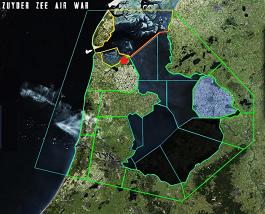
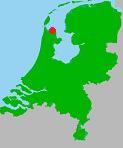
Relation with Lake (class): Lake Area Inland Cemetery (LAI)
Total nr. of casualties buried here (TC): at least 15 end WW2, today 14.
Lake casualties, initially, end WW2 (LC-I): 0
Unknown today: 0
of which unknown from Lake (LC-U): 0
of which unknown from North Sea (NS-U): 0
Initial burial site in WW2: yes.
Post war burial site for collection and reburial from other sites: no
Cemetery with Lake casualties today: no
HIPPOLYTUSHOEF (ON WIERINGEN)
Wieringen was an isolated island for 2000 years and known as a Viking settlement in medieval Holland. Although today closed-in by land on three sides, the former island is still very distinct and lays high above the surrounding area and the sea on the northern side. The landscape on Wieringen looks more Danish than Dutch. In 1924 a dyke was laid to the island to connect it with the mainland. A few years later a large part of the Old Zuyder Sea south of Wieringen was closed-off and pumped dry to win agricultural land. This new land was named the Wieringermeer Polder, completed in 1932. The 1930's drawing board design of this polder and its farming-parcels are very recognizable today and have the typical white-yellow color of the crops that grown well on this former seabed.
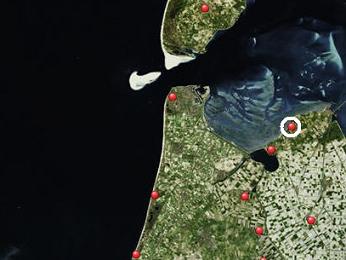

Dutch name cemetery: Hippolytushoef Alg. Begr. Pl.
Full name: Hippolytushoef (on Wieringen) General Cemetery.
Address (usable for car navigation):
Noordburenweg 15.
For reaction or comments; send us an email,
see address and info at CONTACT.
Please use as subject title: 'Hippolytushoef'.
In WW2 washed ashore airmen on the North coast of Wieringen were transported to the Den Helder naval base and buried in Huisduinen Cemetery. But two complete Halifax and Lancaster crews were buried near to where they fell in May and June 1943 and interred here in the village of Hippolytushoef. In 1944 (after 9 April 1944) also an American fighter pilot washed ashore here and was buried in grave 374, next to the RAF airmen. This was Lt. Benjamin A. Pollard, 363 FG.

Below: left crew of Lancaster W4256, crashed 25/26 June 1943. Right crew of Halifax JD149, 27/28 May 1943, recovered from the wreck in the Wadden Sea.

Schematic overview:
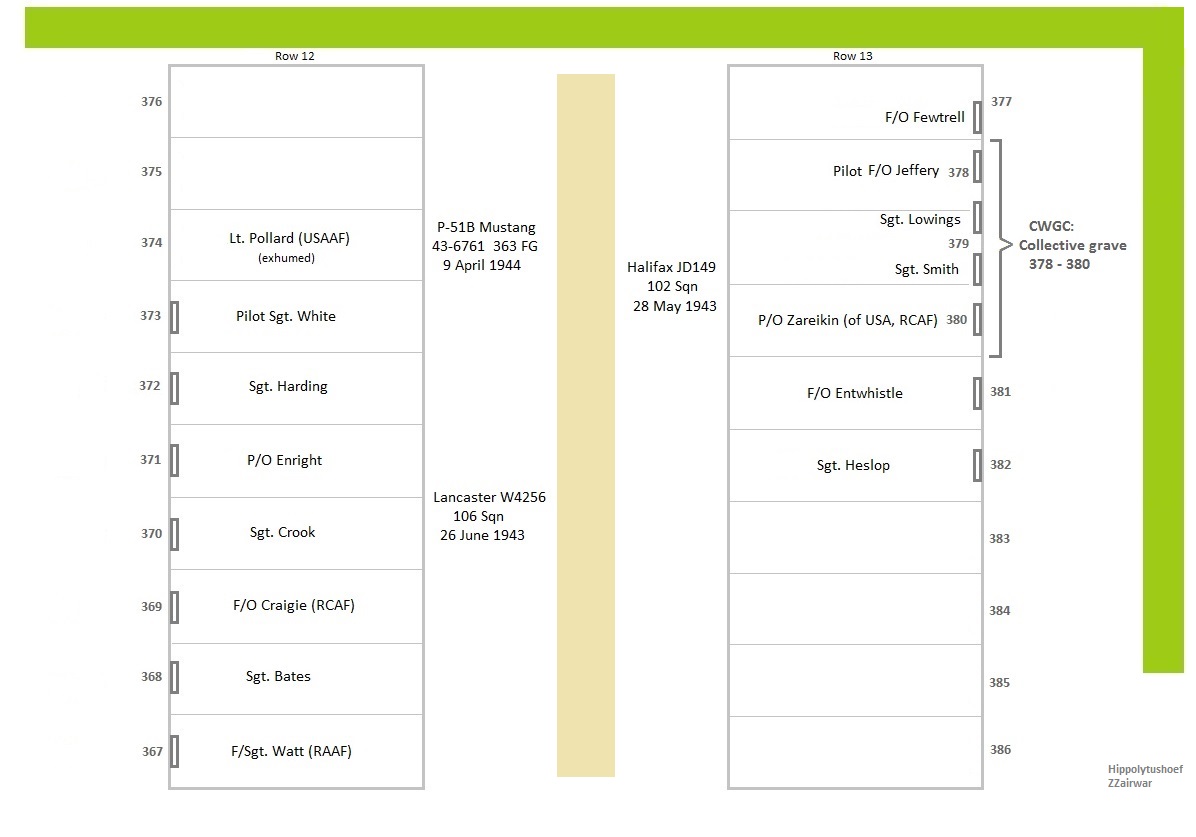
Headstones left to right, crew Lancaster W4256, 106 Sqn.
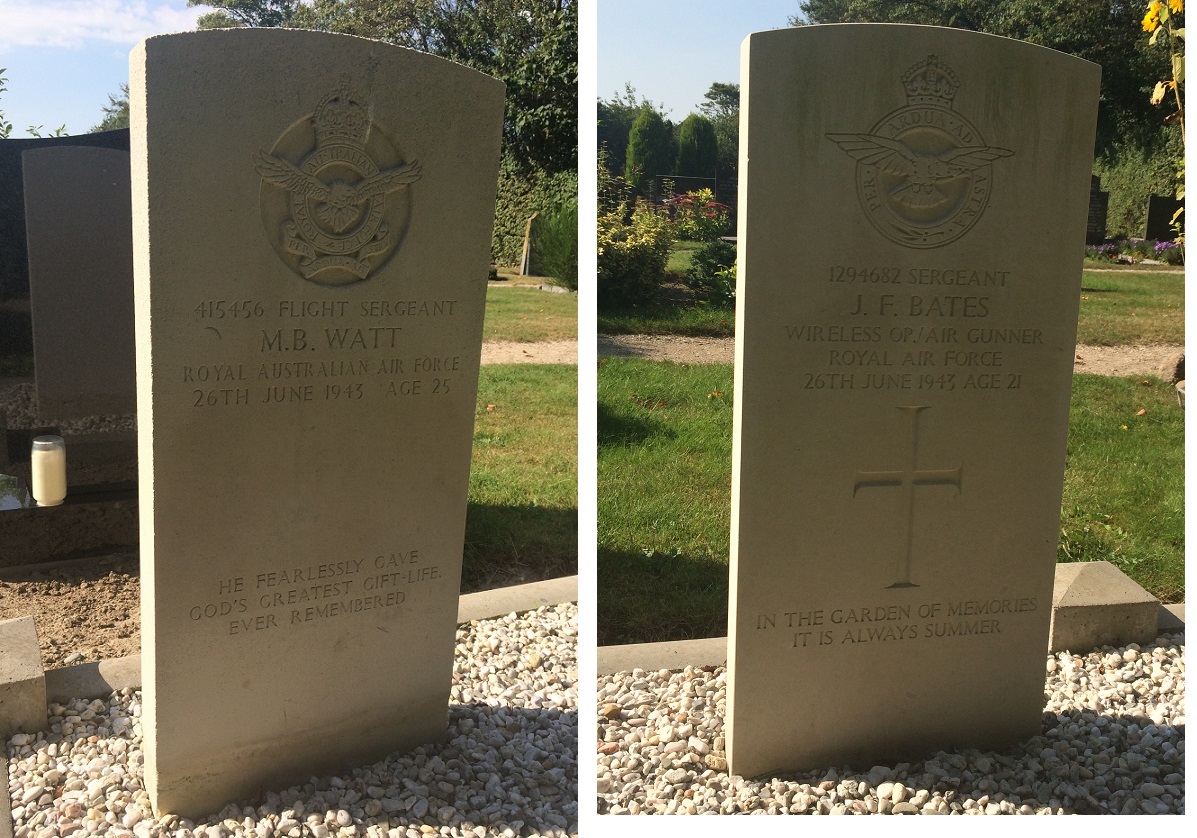
.
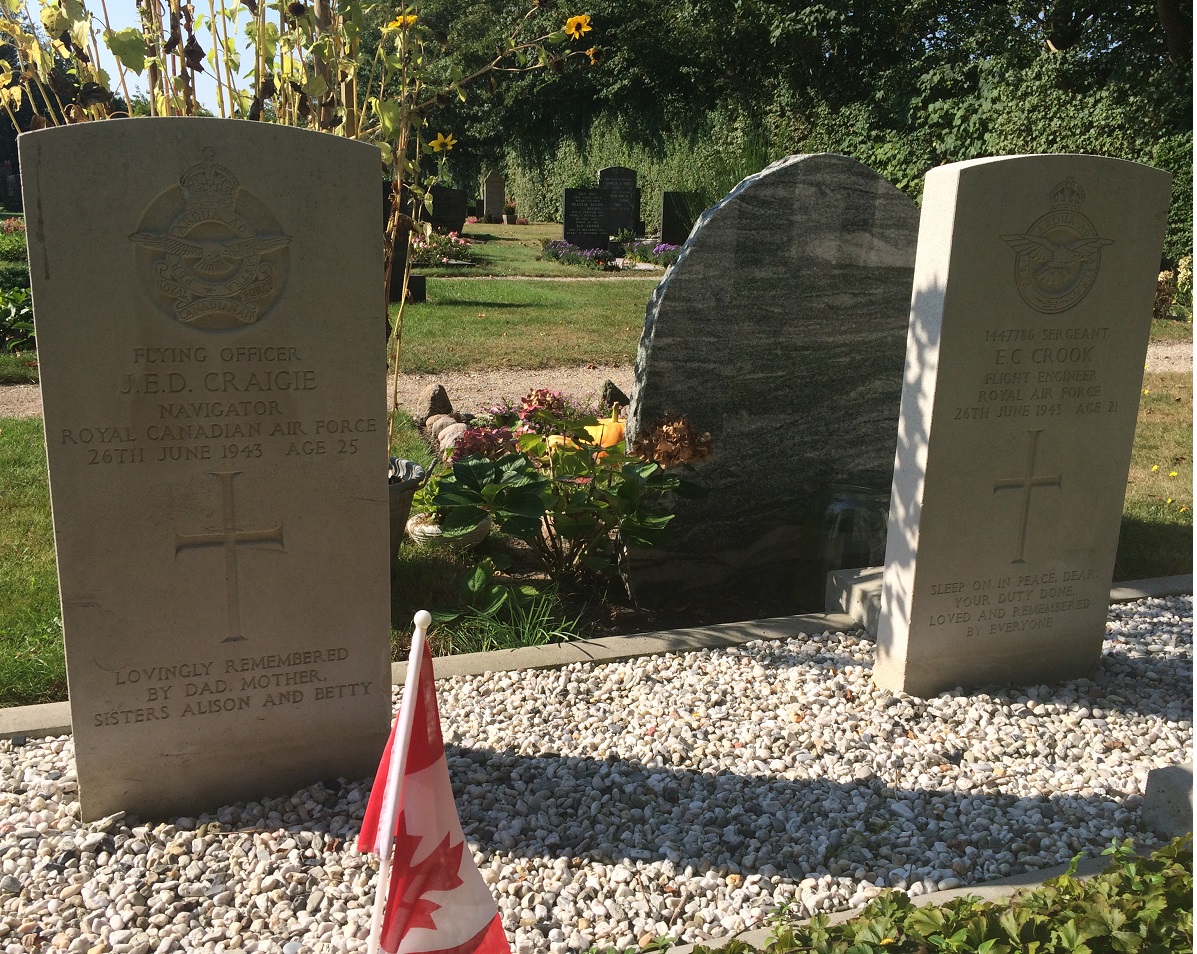
.
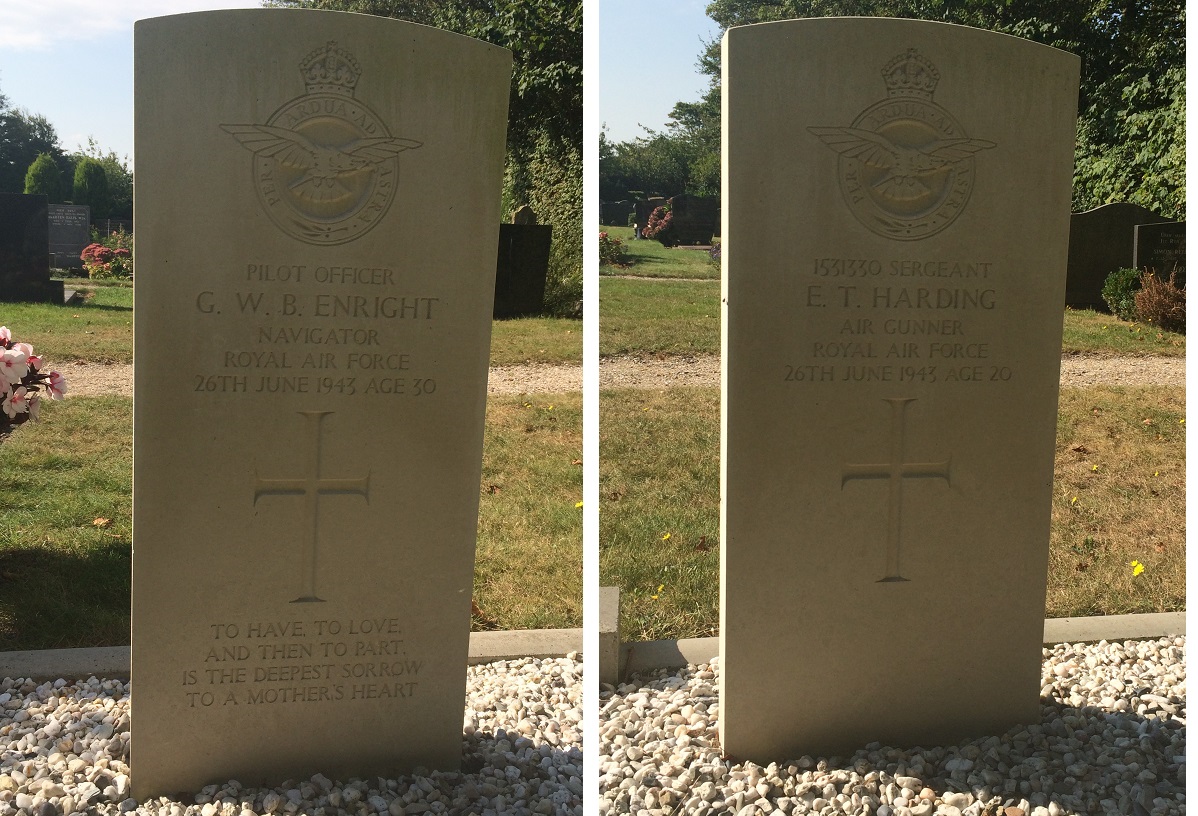
Below the grave of Lancaster W4256 pilot Sgt. Steven G. White, grave 373. Next to him the empty position of grave 374 where American pilot 1Lt. Ben A. Pollard was buried. Lt. Pollard was exhumed post war by an American Quartermaster Grave Recovery unit and reburied in the American centralization War Cemetery in the Netherlands "Netherlands" in Margraten. In the 1949/1950 repatriation program he was exhumed an reburied in the United States. His aircraft was P-51B 43-6761, 363 FG and crashed in sea to the North of here.
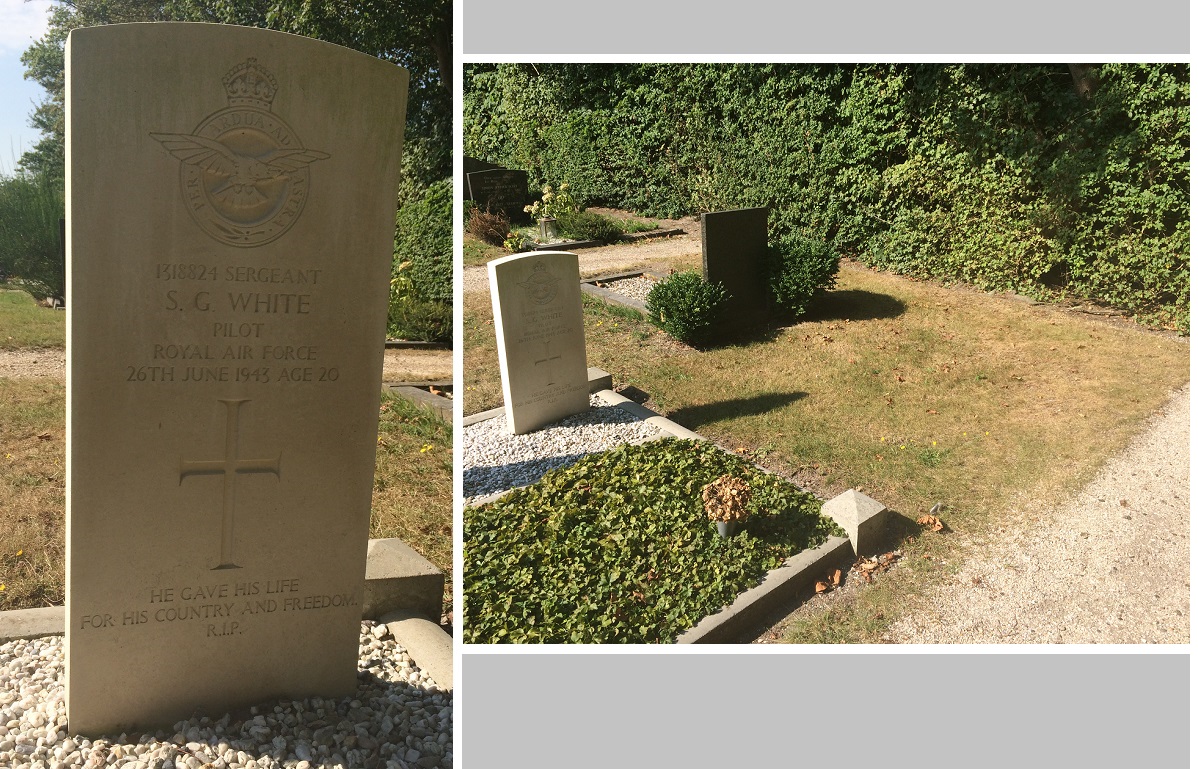
Below, Row 13. Crew of Halifax JD149.
On the left side, five headstones are close together. Three coffins are here in grave 378, 379 and 380, with the remains of five men. Each airman received his own headstone. Grave code for this position is 'Collective grave 378-380'. Grave 377 most left is empty.
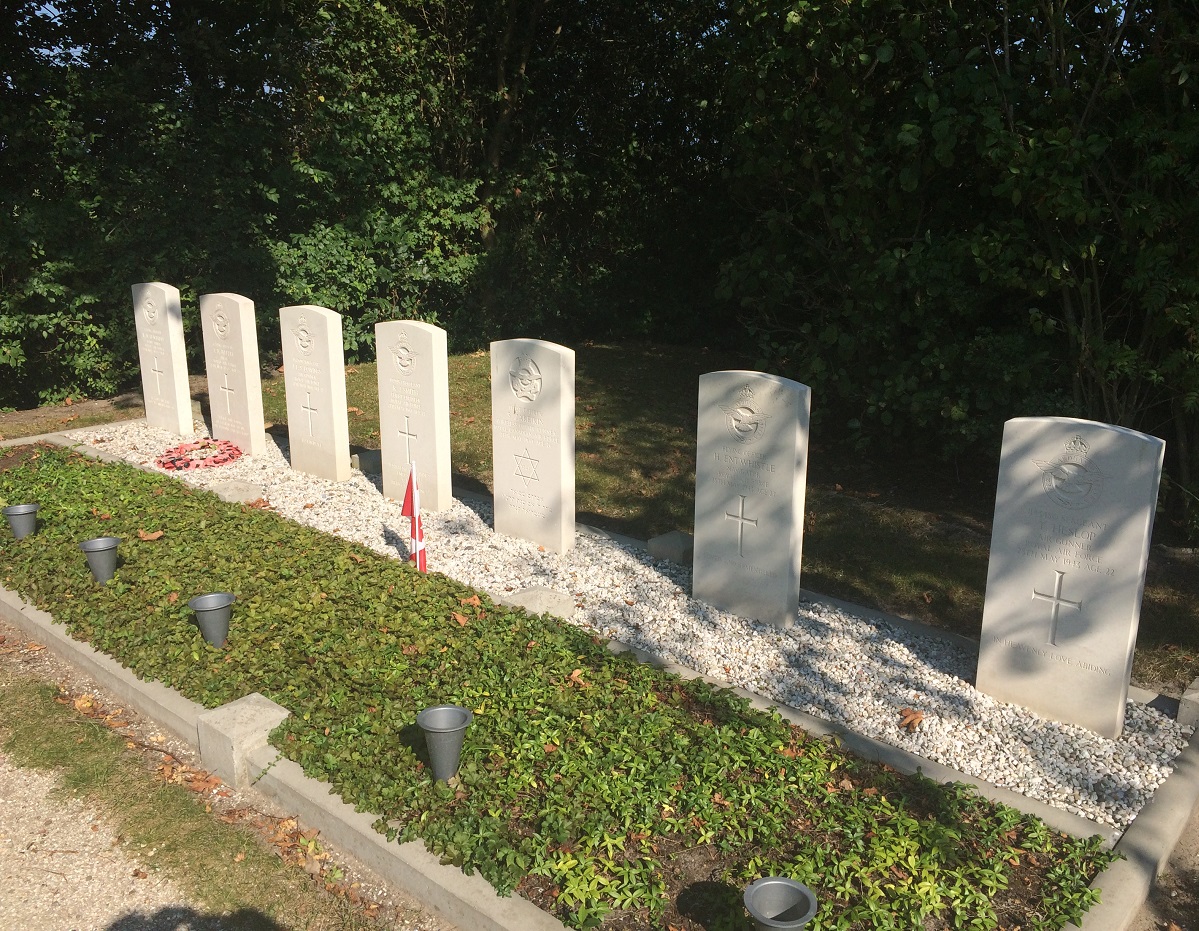
Family of Flying Officer John D. Jeffery visited his grave recently:
http://www.wieringernieuws.nl/nieuws/19441/Oorlogsgraf_Tweede_Wereldoorlog__bezocht_door_Engelse_familieleden.html
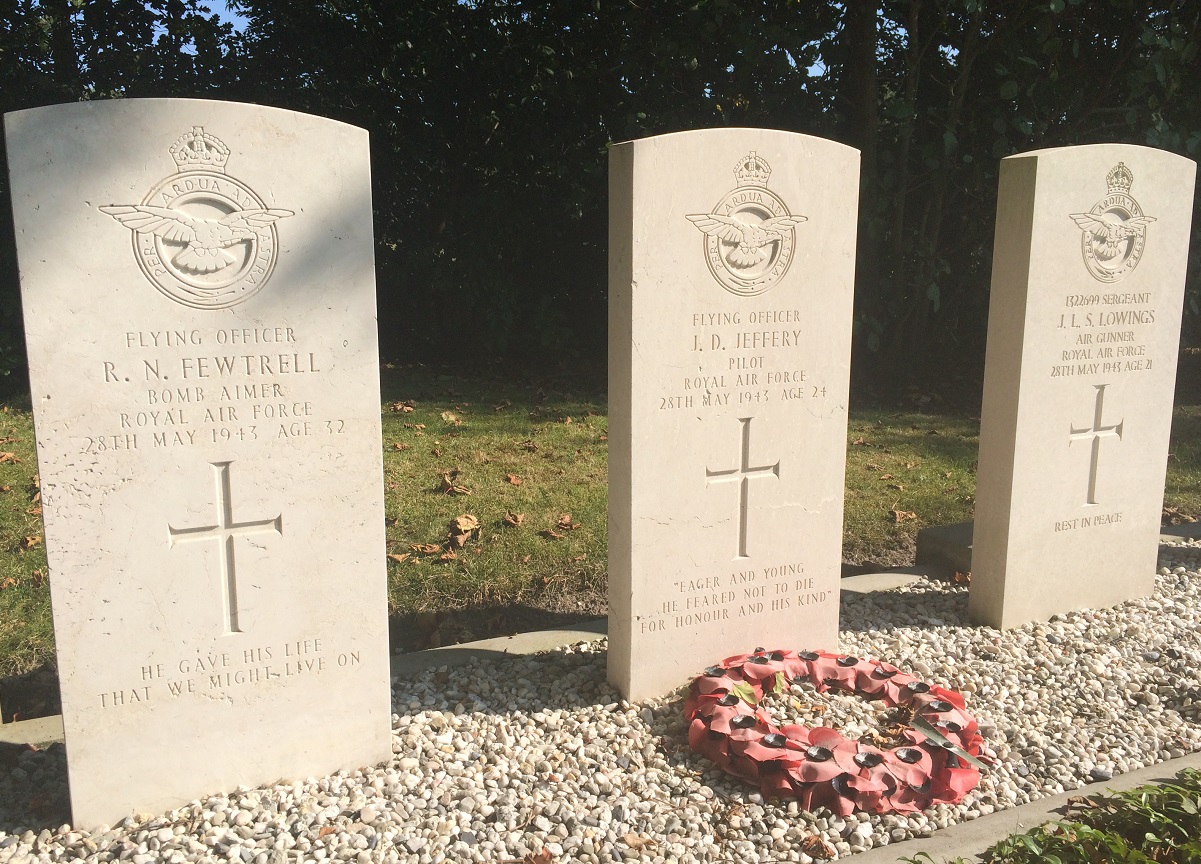
Below: American Volunteer Pilot Officer Samuel Zareikin was born in Canada, but as child moved to the US with his family and became American citizen. He lived in Los Angeles. In 1941, before the USA were involved in WW2, he volunteered in the Canadian Airforce to fight the Nazies. His brother Joseph was shot down and killed a few months later, buried in the UK. Because they were in foreign service, they were not exhumed and stayed in their initial burial location.
http://www.militaryimages.net/media/joseph-m-zareikin.102570/
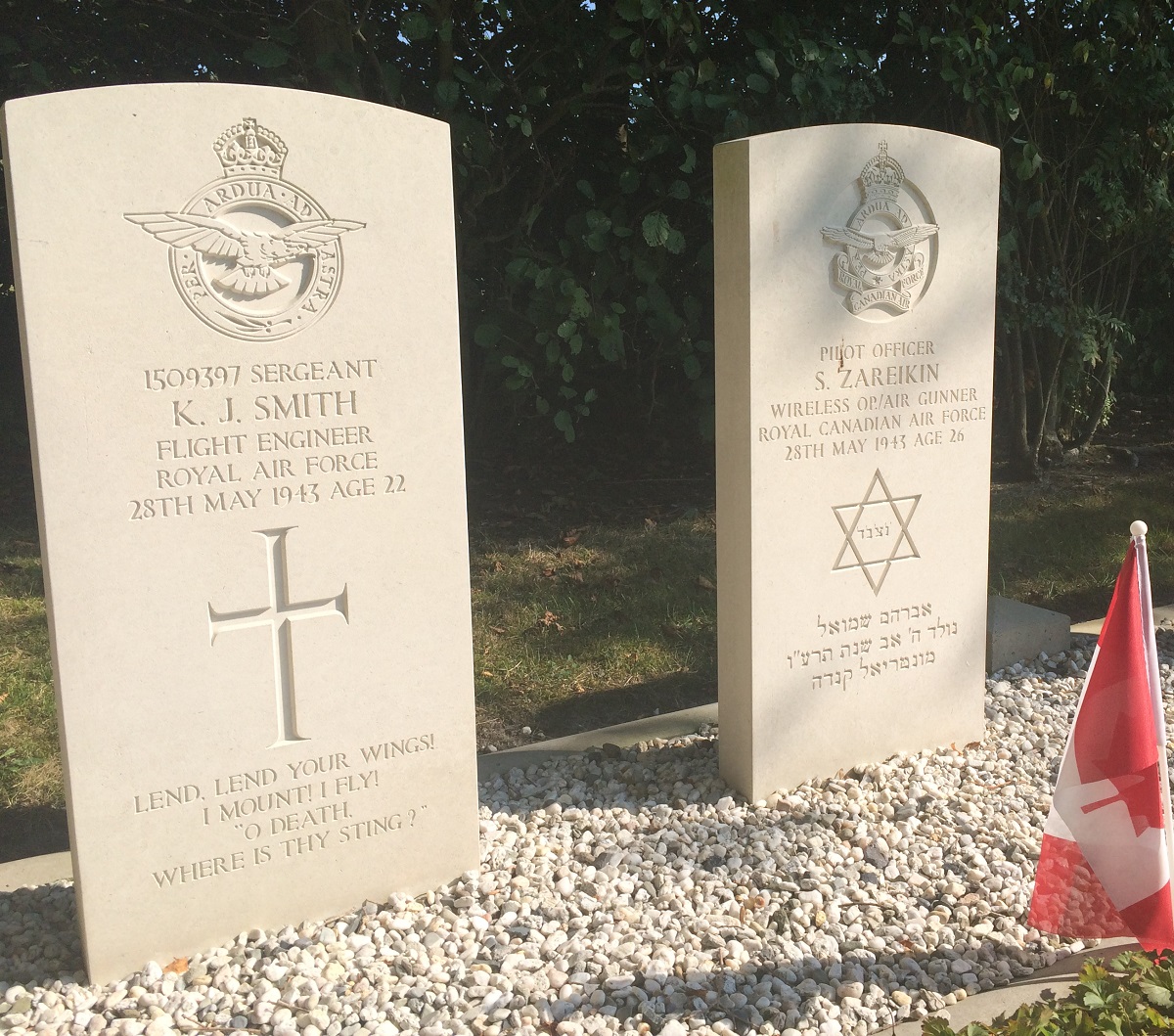
.
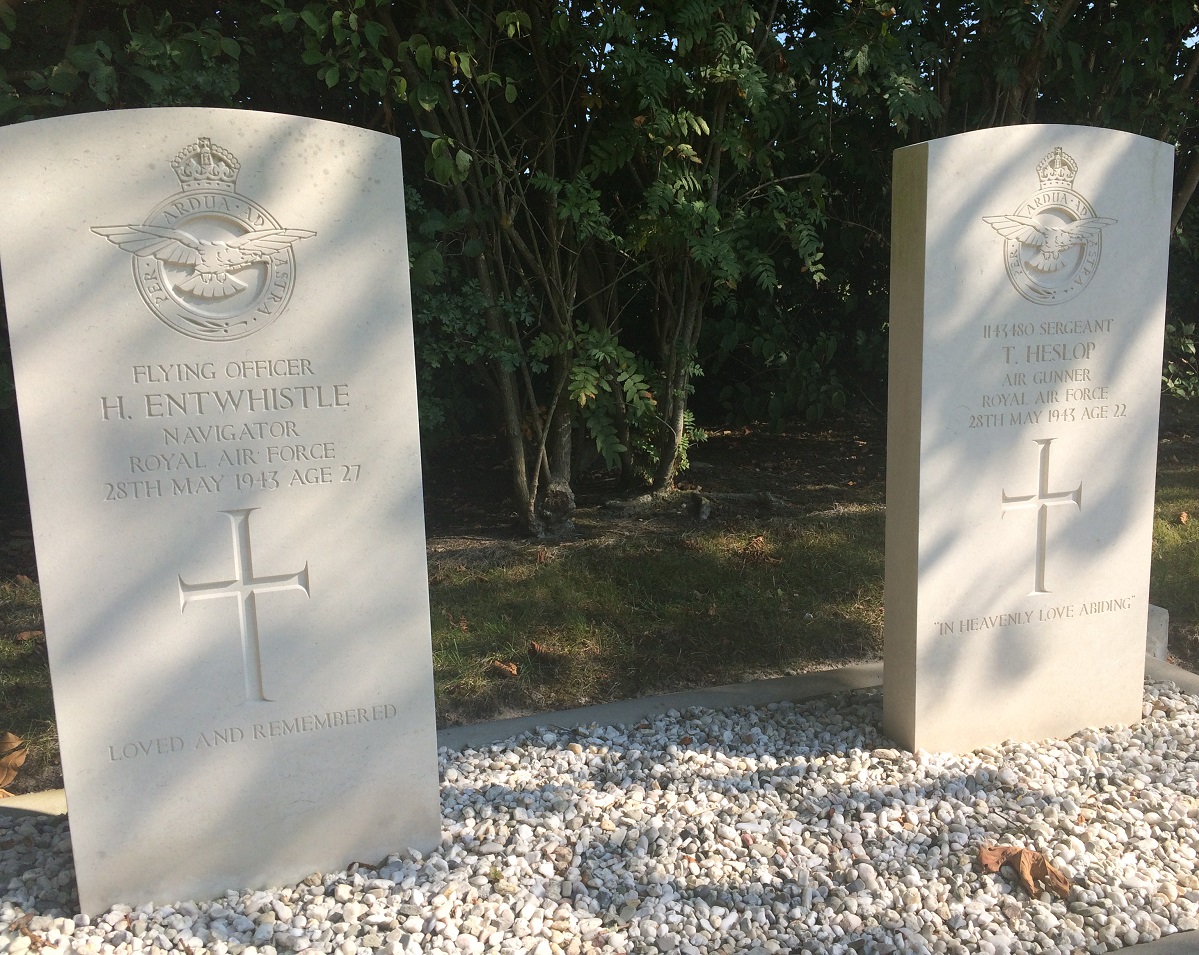
.
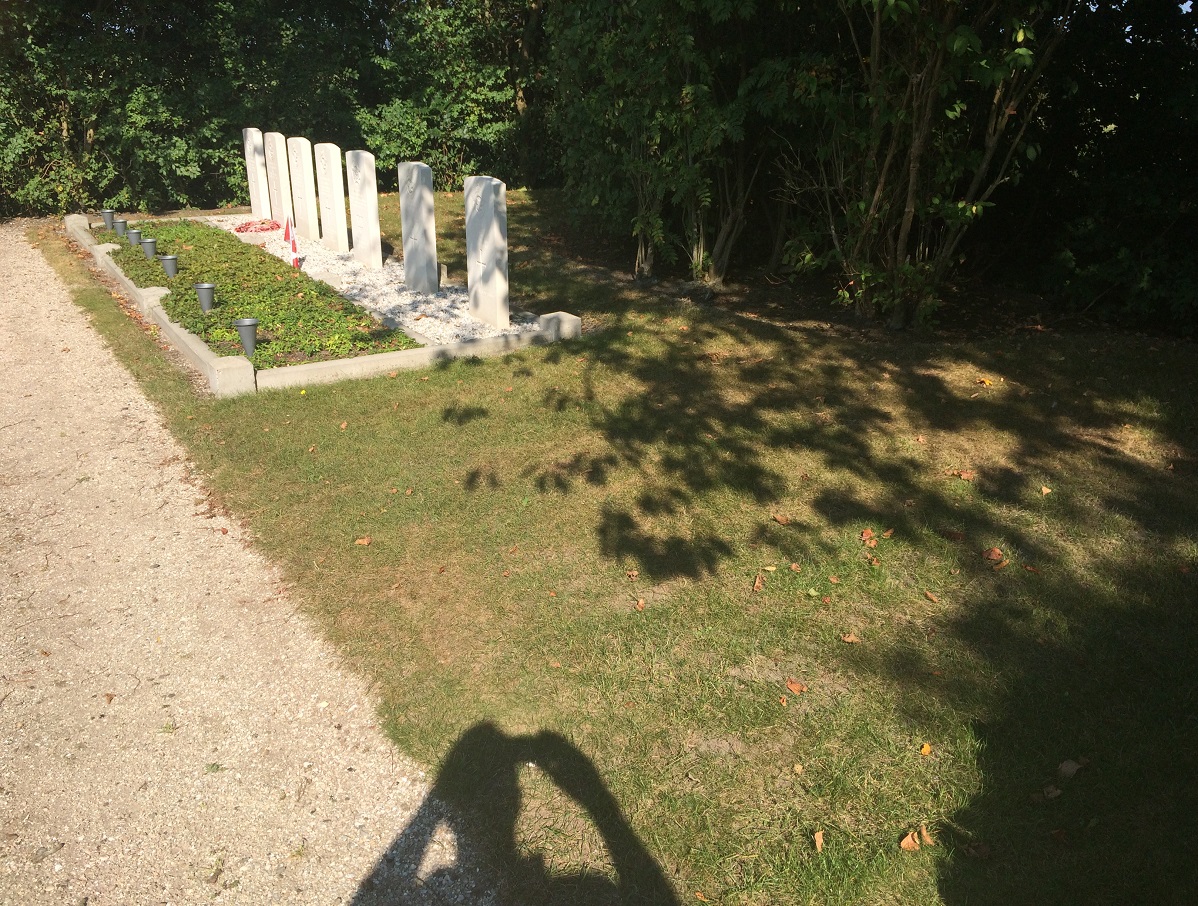
Above photo. The empty graves no. 375, 376, 377 and on this side 383 - 386 are interesting. They could never have been used, had Dutch civilians in them that were cleared after 15 years, or in theory can have contained other washed ashore American airmen, identified or not, that were exhumed together with Lt. Ben Pollard and taken to Margraten or the American Identification Center in Neuville-en-Condroz (Belgium), which is today American Cemetery 'Ardennes'.
Behind the cemetery is the Wadden Sea. Below the view to the left. Den Helder Port and its naval base are visible on the horizon. That corner of the sea is named 'Balgzand'.
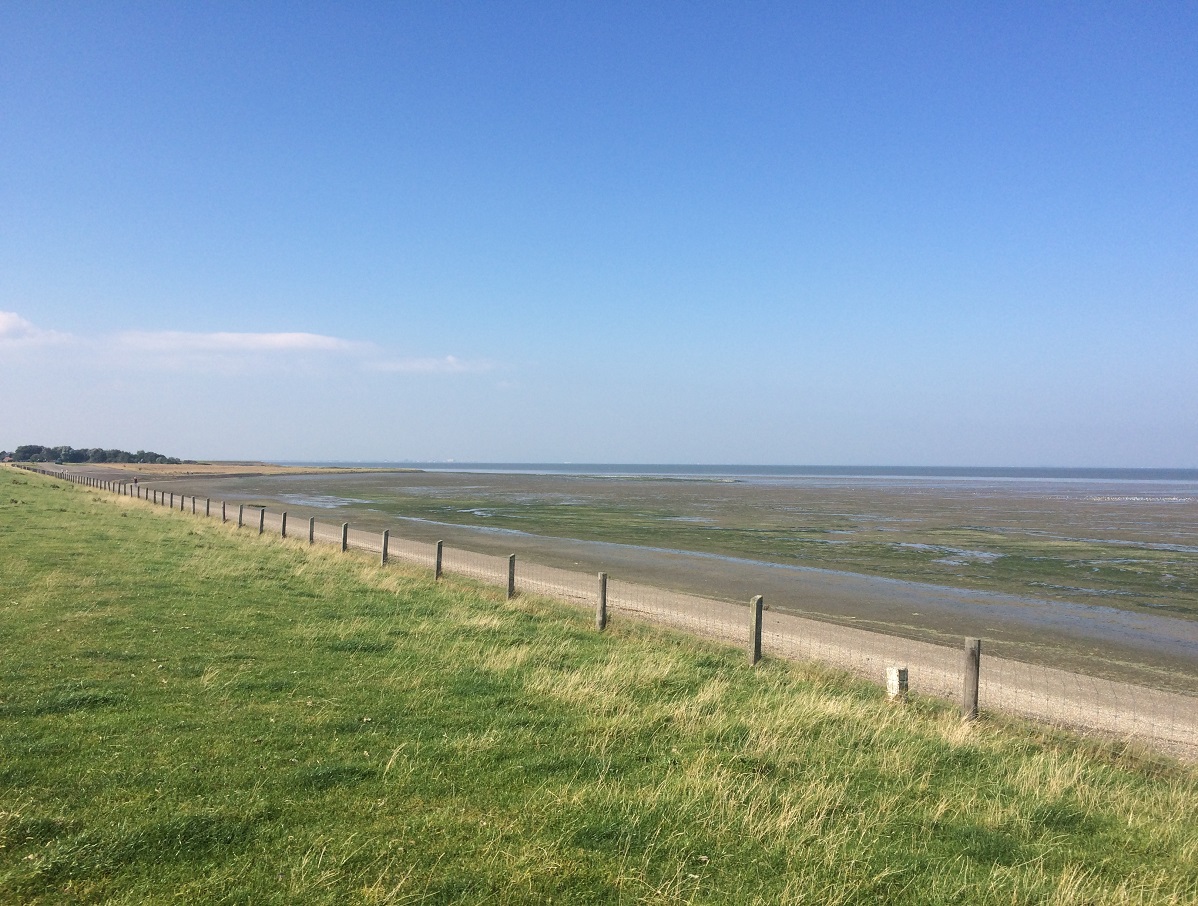
Below: Half tide. Central view towards first Frisian Isles Texel and Vlieland, but they are too far off to be visible. This part of the sea is named 'Breehorn'.
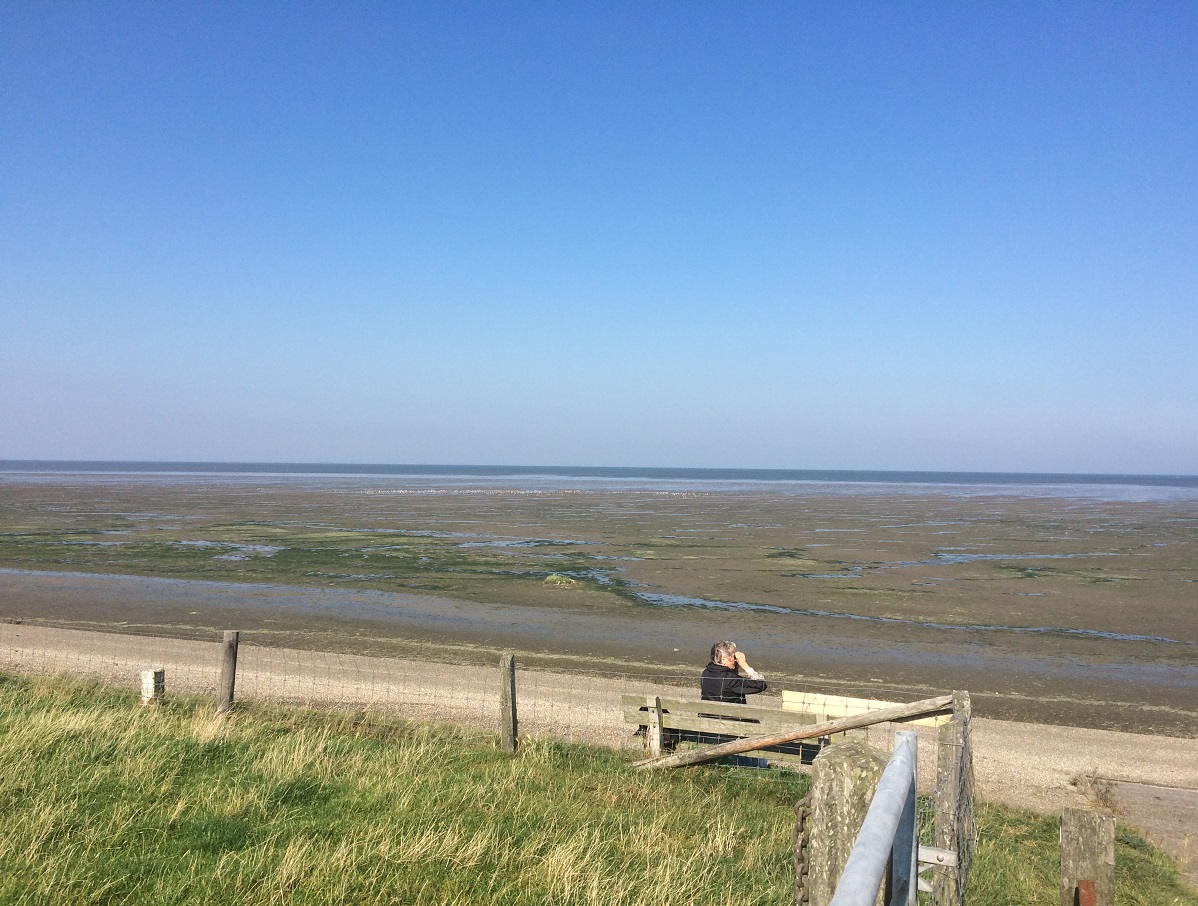
Below. View to the right, near the harbour entrance of Den Oever.
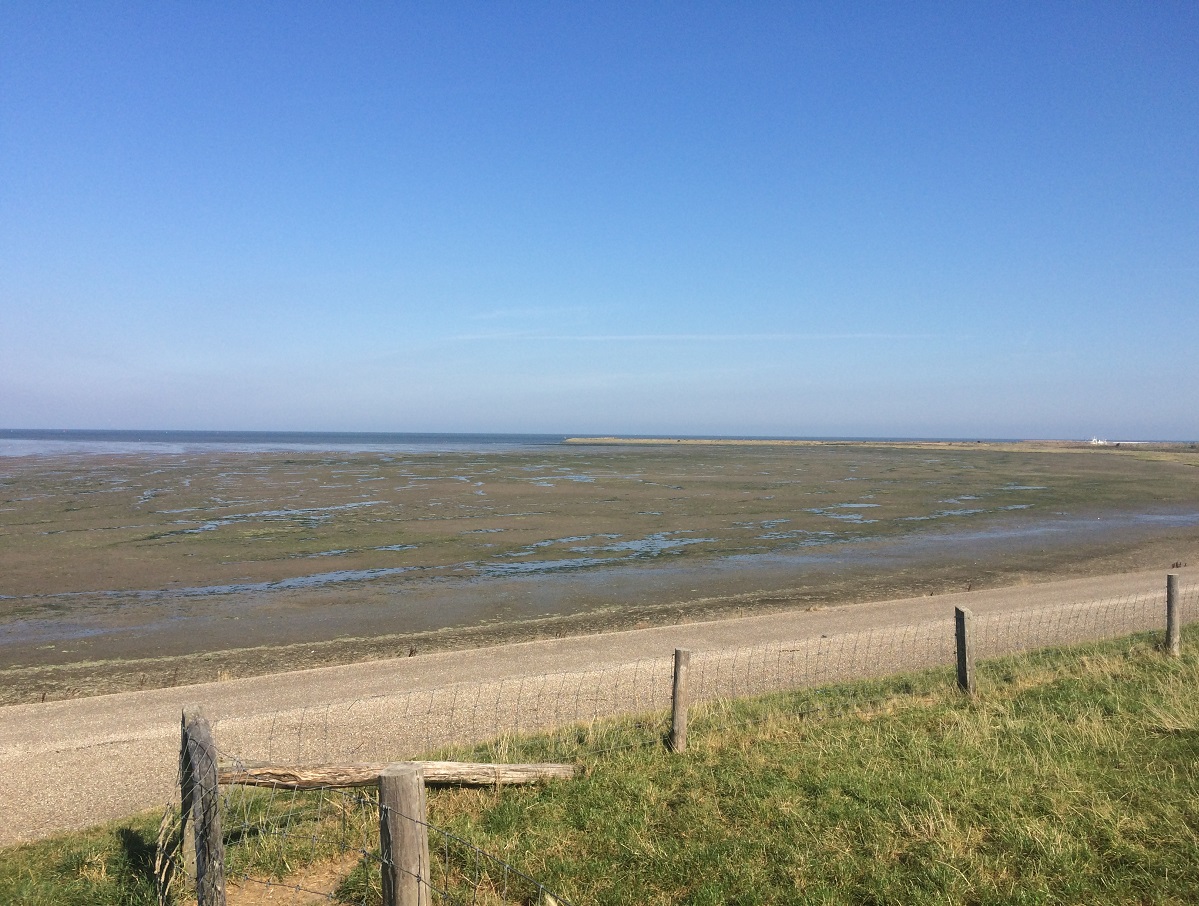
© ZZairwar (Zuyder Zee Air War)
File 940. Hippolytushoef (Wieringen) War Graves
- Details